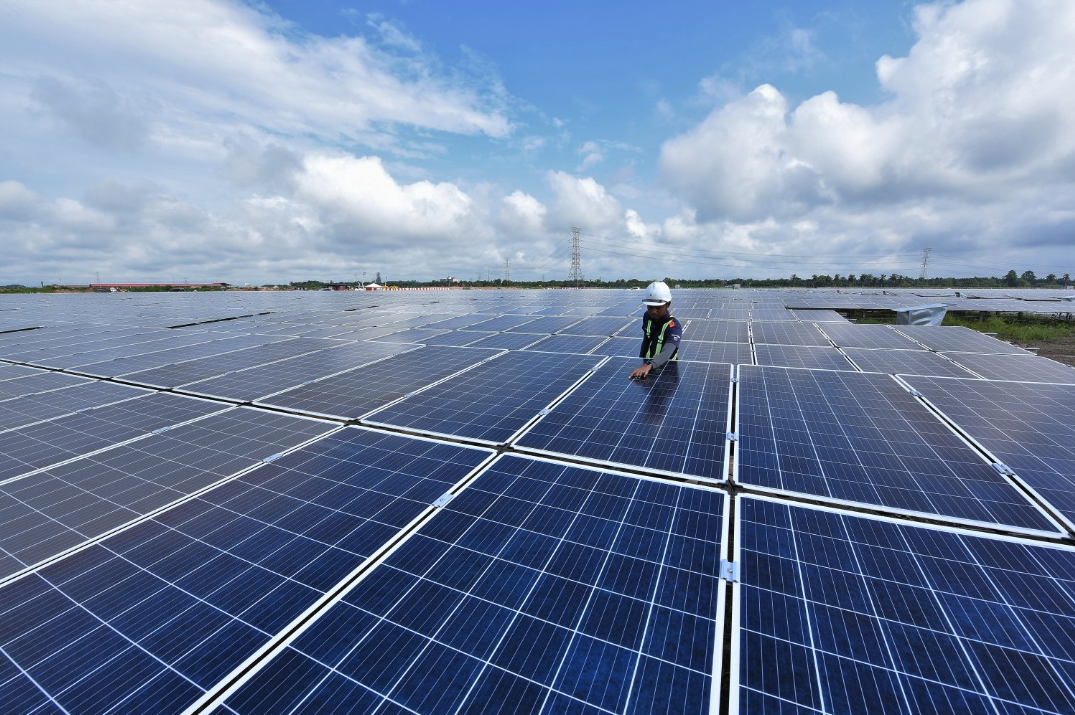Southeast Asia is home to some of the world’s fastest-growing economies. As energy demand grows, the region is turning to renewable energy to not only to sustain economic growth but also to safeguard its energy security.
According to IEA, energy demand in Southeast Asia has increased by an average of 3% every year over the past two decades, a trend that will continue to 2030 under current policies.
However, fossil fuels still domain the region’s energy mix, accounting for about 83% in 2020, compared to renewables’ 14.2% during the same period, as data from the ASEAN Center for Energy shows.
By 2050, the center said that oil, natural gas, and coal will account for 88% of the total primary energy supply.
Zulfikar Yurnaidi, the Policy Planning Manager at the ASEAN Center for Energy, pointed out that the dependence on fossil fuels increases the region’s vulnerability to energy price shocks and supply constraints.
The ASEAN Center for Energy estimated that if Southeast Asian nations do not make significant discoveries or add to existing production infrastructure, the region will become a net importer of natural gas by 2025 and coal by 2039. This will likely result in higher fossil fuel prices and place additional strain on consumers.
To avoid this, the region must diversify its energy sources for economic growth and security, said Yurnaidi.
In fact, most Southeast Asian markets have made significant efforts to announce renewable energy targets and develop their low-carbon energy transition plans. Below are the energy transition developments in five key Southeast Asian markets.
Malaysia
Malaysia launched its National Energy Transition Roadmap in July, aimed at expanding its renewables capacity and reducing its increasing reliance on natural gas imports. The roadmap identified 10 flagship projects, one of which includes plans to build a 1 GW solar PV plant, which would be the largest in Southeast Asia.
Solar energy has remained the most encouraging segment of Malaysia’s renewables landscape since 2011, with an installed capacity compound annual growth rate of 48%, according to the government.
Other planned projects include an integrated renewable energy zone, five centralized large-scale solar parks and three green hydrogen production plants. These projects will leverage Malaysia’s estimated 290 GW of technical renewable energy potential to create a more resilient, low-carbon power system, said the Ministry of Economy.

Solar energy stands as the most promising sector in Malaysia's renewable energy development.(Photo: TNB)
Vietnam
Vietnam issued its Power Development Plan 8 in May, a pledge to boost wind and gas energy while reducing its reliance on coal.
Renewables sources such as wind and solar are projected to account for at least 31% of national energy needs by 2030, the government said.
According to the plan, all coal plants must be converted to alternative fuels or cease operations by 2050. Although coal will remain a key energy source in the near term, accounting for an estimated 20% of its total energy mix in 2030, it would be a decrease from nearly 31% in 2020.
Singapore
Singapore’s Green Plan 2023 also emphasizes an increase in renewable energy. It aims to boost solar energy deployment to at least 2 GW of capacity by 2030, which will cover about 3% of the projected electricity demand, said the Ministry of Sustainability and the Environment.
Around 95% of Singapore’s electricity is produced from natural gas, a fossil fuel energy source, according to the ministry.
Although Singapore’s space constraints limit its renewable energy options, the plan will implement measures like rooftop solar panels as well as importing electricity and hydrogen from other Southeast Asian nations to reduce reliance on fossil fuels.
In 2022, Singapore’s Keppel Electric signed a two-year agreement with Laos to import up to 100 MW of renewable hydropower through Thailand and Malaysia. This marked the country’s first renewables import, as well as the first multilateral cross-border electricity trade involving four ASEAN members.

Singapore plans to use rooftop solar and import energy to reduce fossil fuel reliance.(Photo:Green Plan)
The Philippines
Southeast Asian markets are also looking to attract foreign firms with expertise to develop their renewables sectors, said David Thoo, power and low carbon energy analyst at BMI Fitch Solutions.
In November, the Philippines removed ownership requirements in certain renewables resources, allowing foreign investors to fully own projects involving solar, wind, hydro, or ocean energy resources. Foreign companies could own only up to 40% of such energy projects in the past.
Foreign ownership is important in facilitating wind projects in the Philippines, which has the potential to install 21 GW of offshore wind power by 2040, according to a report by the World Bank. That’s about one-fifth of its electricity supply.
The Philippines relies heavily on imported fossil fuels, putting it at risk of price increases and supply constraints, said the report.
But the World Bank said foreign firms can share their knowledge and experience, especially in helping renewables projects move from pre-development to later stages that involve higher expenditure.
Indonesia
Indonesia has also relaxed some foreign ownership restrictions to push renewable energy investments.
The government now allows 100% foreign ownership of power transmission, power distribution and power generation projects which have a capacity of over 1 MW.
“We are optimistic that a lot of foreign investment will come in over the next few years, resulting in more renewable energy projects in the region.” said Yurnaidi.





